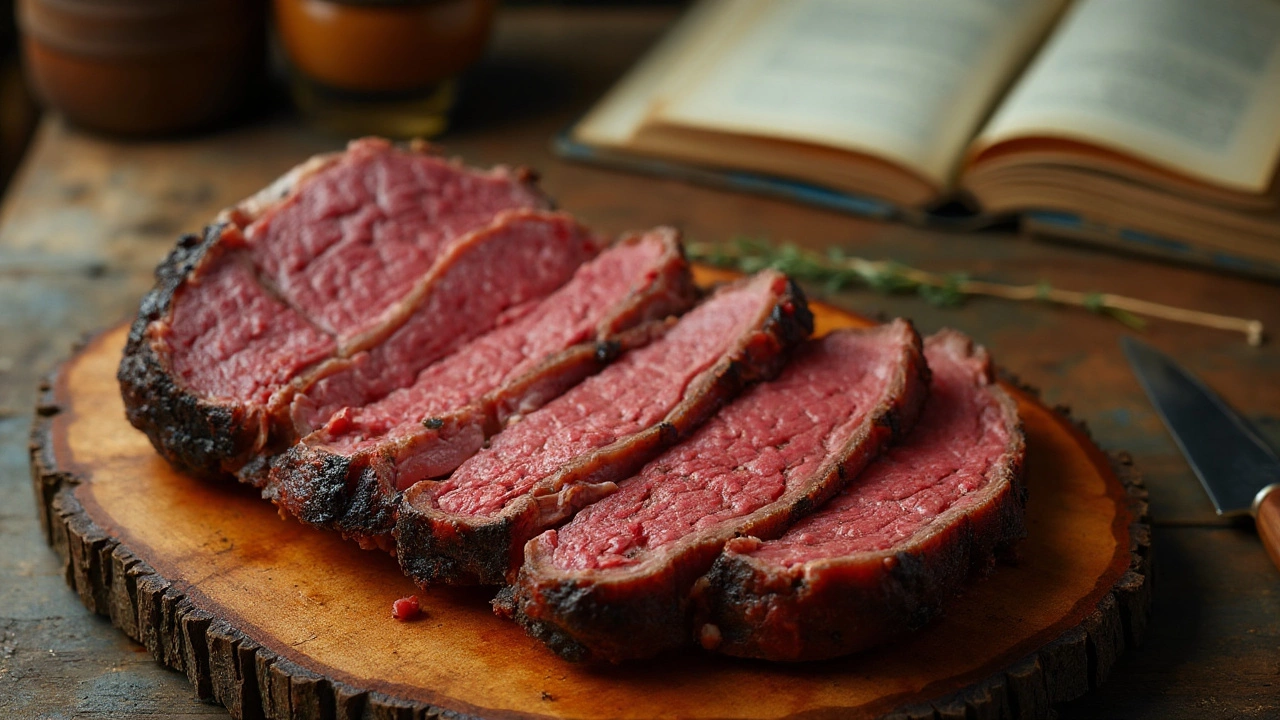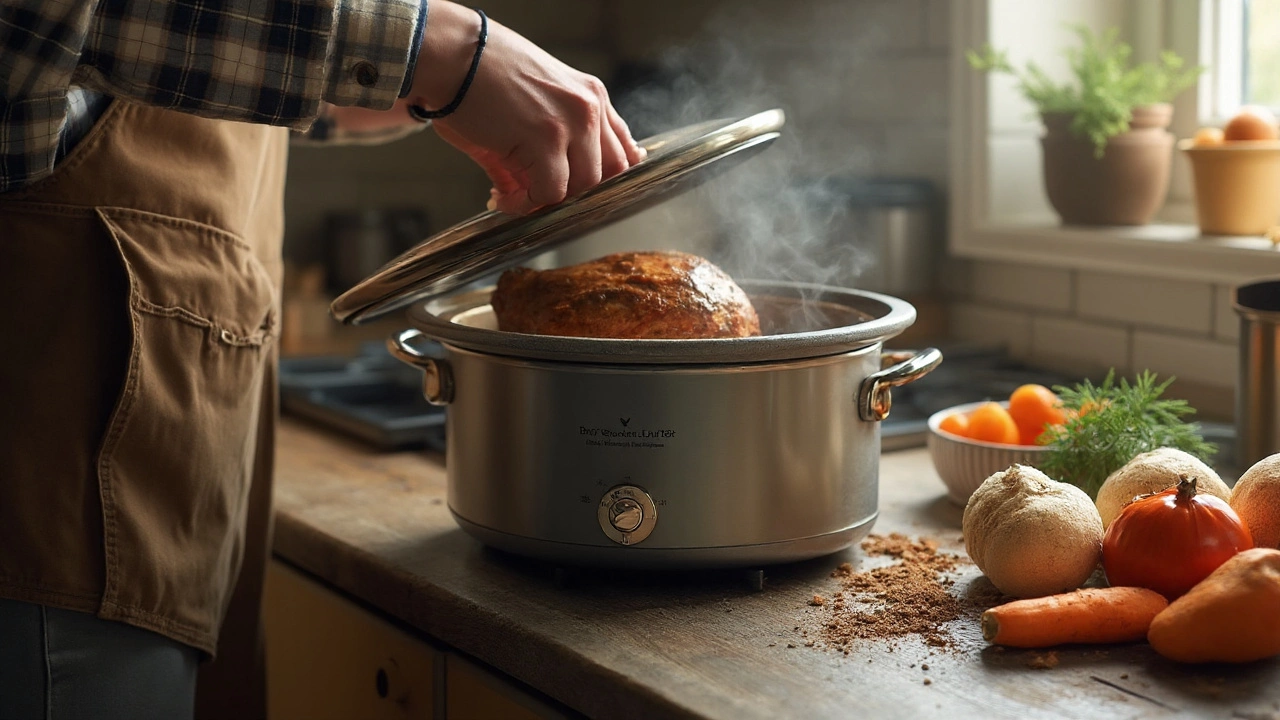Ever come back after a long day, excited for the aroma of a slow cooker dinner, only to find your meat dry, stringy, or bland instead of melt-in-your-mouth tender? It feels unfair—after all, “low and slow” is supposed to guarantee success, right? But here’s the truth: even on that gentle low setting, you can absolutely overcook meat in a slow cooker, and the difference between juicy and disappointing is all in the details you probably missed.
How the Low Setting Works—and Why Overcooking Still Happens
It’s tempting to think a slow cooker on low is foolproof. Just toss in your meat, go to work, come home, and feast—simple. But slow cookers, though forgiving, don’t work magic. The low setting typically heats food to around 190°F–200°F (88°C–93°C) once it’s warmed up. That’s plenty hot for breaking down tough connective tissue in meats like chuck roast or pork shoulder, which is why slow cookers are famous for turning cheap cuts into fork-tender feasts.
But here’s a sneaky truth: prolonged exposure to even these “low” temps continues to break down meat fibers well after they’ve turned soft. There’s a common belief that you can’t overcook meat in a slow cooker if it’s on low, but that’s more myth than fact. Collagen melts and meat gets tender, but if you leave it cooking for too long, it will dry out, lose flavor, and the texture becomes unappetizing—think stringy and crumbly, not juicy. Even the most marbled brisket can suffer if left to cook way past its ideal window. The longer it sits, the more moisture it sheds, leaving nothing but fibers and disappointment.
Most slow cooker recipes for beef roasts, pork shoulders, or chicken thighs suggest 6–8 hours on low. Go longer, say 10–12 hours or more (maybe because work dragged on or you got stuck in traffic), and you’re rolling the dice. I’ve made plenty of family dinners where I thought a little extra time would make things even better—only for Quentin to push overcooked pulled pork around his plate with clear suspicion. If you go with lean cuts like chicken breast or turkey, they’re even less forgiving.
The size and type of your slow cooker matters too. Older or cheaper models can run hot; newer programmable versions with temperature probes will cycle to maintain a more consistent low. Some well-known brands’ latest models have a keep-warm setting that kicks in after the timer ends—this can actually dry things out if it’s on for hours, since the food keeps cooking, just to a smaller degree.
Then there’s the issue of how full the pot is. A half-full slow cooker cooks faster than a jam-packed one since there’s more direct heat on the ingredients and less liquid to buffer temperature changes. Crowding the cooker means longer to come up to temp, but the food stays juicy longer because it’s bathing in more surrounding moisture.
If you’re number-obsessed, here’s a quick glance: According to a 2024 survey by Pew Kitchen Studies, 45% of slow cooker owners reported at least one instance of overcooked meat in the past year, with most blaming the “set-and-forget” mindset and a lack of understanding their device’s specifics. In fact, average measured low settings ranged from 185°F to 210°F—a big swing if you’re trying to nail the sweet spot for pulled pork.
| Cut of Meat | Ideal Low Cook Time (hrs) | Risk of Overcooking After (hrs) |
|---|---|---|
| Pork Shoulder | 8 | 10+ |
| Beef Chuck Roast | 8 | 10+ |
| Chicken Breast | 3.5 | 5+ |
| Lamb Shanks | 7 | 9+ |

Signs of Overcooked Meat and How to Avoid Common Mistakes
Ever noticed your shredded beef is almost powdery, or your chicken tastes like it’s been sitting in a cafeteria tray all day? These are classic red flags of overcooking. Even with plenty of liquid, meat left for hours beyond perfection just keeps breaking down. Instead of mouthwatering shreds, you get mush. Instead of juicy slices, you get dryness that no sauce can rescue.
One sneaky sign? If your roast falls apart into tiny granules instead of chunky strands, you’ve probably let it go too long. Another giveaway: if the flavor tastes less rich, or oddly flat, it could be because the juices have been absorbed back into the cooking liquid and the meat itself has given up all its moisture. My son Quentin, who treats barbecue like a sacred ritual, can pick up on this with one bite. “Dad, did you make jerky in the slow cooker?” (If only he could be so wrong.)
Here are a few tips to dodge these kitchen letdowns:
- Know your cut: Tough, fatty cuts hold up better and thrive on low for hours—think short ribs, pork shoulder, chuck roast. Lean meats (chicken breast, pork loin) turn to cardboard if you’re not careful.
- Stick to recipe times: The folks who write slow cooker recipes have already tested the sweet spot. If they say 8 hours, don’t stretch it to 12 because you’re out for the day.
- Check your machine: A $30 model from a thrift shop can run “low” at almost boiling. Use a probe thermometer to check liquid temperature at the end of cooking. If it’s higher than 200°F while on low, you might need to cut cooking times.
- Add veggies and liquids wisely: Root veggies on the bottom act as a moisture “bed,” and layering can help prevent scorching. But too much liquid isn’t always better—it can actually leach out flavor and keep things soggy while still overcooking muscle fibers.
- Be careful with keep-warm: Up to 2 hours is usually safe, but if your slow cooker idles in keep-warm mode for 4+ hours, you risk breakdown and dryness.
- Don’t peek: Lifting the lid drops the temperature by 10–15 degrees each time and slows down cook time, ironically making you leave meat in even longer than needed.
Let’s not forget about food safety. The lowest safe internal temperature for poultry is 165°F (74°C), and 145°F (63°C) for pork and beef roasts, so don’t go too short, either. But once you hit that point and have allowed the connective tissue to break down—time to dive in. It’s a tightrope: enough hours to soften and flavor, not so many that you’re right back at square one with a dry dinner.
If you’re worried about timing, here are a couple tricks that save me when life gets in the way:
- Smart plugs with timers: Set your slow cooker to turn off after the right number of hours—no Wi-Fi needed.
- Programmable slow cookers: Let the machine drop to keep-warm automatically, but set an alarm or reminder so you don’t forget to eat.
- Use larger chunks: Pieces that are too small dry out faster—keep roasts or thighs whole, then shred or carve just before serving.
- Rest the meat: Just like with a grilled steak, giving your slow-cooked meat a 10-minute rest helps juices redistribute and keeps things juicy.
One last hard-learned lesson: save the delicate stuff—like fresh herbs, dairy, or seafood—for the last hour, so you’re not left with muddy flavors or rubbery texture.

Real-Life Cooking Times and Getting the Best From Your Slow Cooker
Ever found a recipe calling for “8–10 hours on low” and felt a moment of dread? That’s a pretty big window, and the truth is, your slow cooker isn’t quite like your neighbor’s. Bought mine in 2019—still works, but it runs a little hotter every year. My mom’s ancient Rival model could keep brisket moist for 10 hours, but my new programmable one is done at 7, or dinner tastes like those sad airport sandwiches nobody really wants.
Let’s get real about some common cooking times. Beef chuck roast? About 7–8 hours on low, then check for doneness with a fork; it should pull apart but still hold some structure. Pork shoulder? Same deal. Chicken thighs—boneless, skinless—rarely need more than 4–5 hours before they reach that easy-shred stage. Chicken breasts are even touchier, sometimes hitting peak juiciness in 2.5–3.5 hours. Aim for tender meat, not mush, and you’ll find your sweet spot.
What if you need to make dinner stretch? You can reduce the heat further by propping the lid open slightly with a wooden spoon, letting more moisture escape, or swap to a “keep-warm” mode earlier, if your cooker has it. But don’t expect that to work for more than two hours.
Here’s a quick-reference table of typical slow cooker meat timings, just to keep handy (trust me, I wish I had this taped inside my kitchen cabinet years ago):
| Type of Meat | Total Weight | Low Cook Time (hrs) | Dry/Overcooked After (hrs) |
|---|---|---|---|
| Beef Chuck Roast | 3 lb | 7–8 | 10+ |
| Pork Shoulder | 4 lb | 8–9 | 11+ |
| Chicken Thighs | 2 lb | 4–5 | 6+ |
| Chicken Breasts | 2 lb | 2.5–3.5 | 5+ |
Don’t just set and forget—set a reminder or a timer. You can always leave meat in the sauce (with the slow cooker off) for an hour or two if you need to, but leaving it on even “warm” all day can be the difference between second helpings and sad leftovers.
And if the worst happens? If you do overcook your meat, don’t toss it—shred it and simmer gently in sauce to bring back some moisture, or add it to soup or chili where tenderness matters less. But your best bet is still a little care with the clock, and a willingness to peek under the lid (just at the end) to test for that perfect pull-apart moment. Now you know: low doesn’t mean unlimited. Use these tips and you’ll nail it—your slow cooker might just become the kitchen MVP again.

